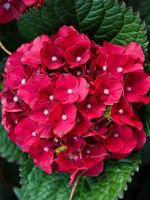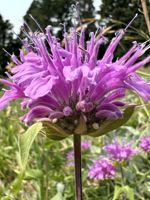Mon-Fri 9am - 5pm Mountain time
Cherry Go Round™ Reblooming Hydrangea vs Wild Bergamot
Hydrangea macrophylla Hokomaburlac
Monarda fistulosa
NOT AVAILABLE THIS SEASON - MIGHT RETURN
NOT AVAILABLE THIS SEASON - MIGHT RETURN
Cherry Go Round Reblooming Hydrangea™ is a compact flowering shrub. The deep red flowers will bloom in late spring and last until fall. The mophead-like flowers add multi season interest to your landscape. The petite form is well suited for urban yards and tight spaces.
Flowers grow on old wood which requires only spent flowers and damaged wood to be removed. The Cherry Go Round Reblooming Hydrangea is part of the Bloomin’ Easy® collection.
On the prairies, some customers will plant the Cherry Go Round Reblooming Hydrangea in pots and over winter them in their garage. They need additional winter protection for the flower buds.
Note: Flower colour may be influenced by the soil pH. In more alkaline soils the flowers will emerge more pink whereas those in acidic soils will be a deep purplish red. They prefer slightly acidic soils with a pH of 5.7-6.5.
Wild Bergamot is a native perennial wildflower that is known for its fragrant lilac-purple tubular flowers. The flowers grow in dense terminal heads and bloom from mid-summer to early fall. Deadheading spent flowers will encourage new blooms, prolonging its display. They attract pollinators such as bees, butterflies, and hummingbirds. It also serves as a host plant for the Raspberry Pyrausta (Pyrausta signatalis) butterfly.
Wild Bergamot belongs to the mint family, and its leaves, stems, and flowers are all edible. The leaves can be used to make tea or as a flavorful herb, with a taste often described as a blend of oregano and thyme.
It is resistant to deer and rabbits but can be susceptible to powdery mildew if planted too densely with poor air circulation. Wild Bergamot tolerates heat, drought, and poor soils, making it a low-maintenance addition to a variety of projects. It is well suited for pollinator gardens, wildflower gardens and naturalization projects.

